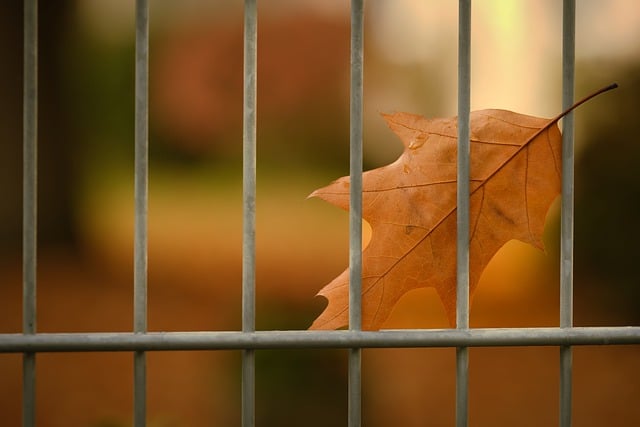New Bedford’s ornamental fencing landscape showcases a rich tapestry of historical influence, design evolution, and cultural heritage. From the grandeur of Palladian and Classical Revival styles that hark back to the city’s architectural roots to the intricate wrought iron patterns and motifs that adorn local gardens, the aesthetic variety is as enriching as it is visually compelling. This article explores the timeless charm of traditional ornamental fencing while also highlighting modern adaptations and innovative designs that breathe new life into this art form. Join us on a journey through New Bedford’s fencing history, where each style tells its own story, contributing to the city’s vibrant urban fabric.
- Historical Influence on Ornamental Fencing in New Bedford
- Palladian and Classical Revival Styles in Local Landscapes
- Traditional Wrought Iron Patterns and Motifs
- Modern Adaptations and Innovative Designs in Contemporary Ornamental Fencing
Historical Influence on Ornamental Fencing in New Bedford
Throughout its history, New Bedford, Massachusetts, has been a melting pot of cultures and influences, which is reflective in the ornamental fencing styles that have evolved over time within the city. The early 19th century saw an influx of immigrants from various parts of Europe, each bringing their unique design aesthetics to the local vernacular architecture. The Victorian era introduced elaborate cast iron and wrought iron fences, often adorned with intricate patterns, fleur-de-lis motifs, and scrollwork, which were both a status symbol and a testament to the craftsmanship of the time. These ornamental elements served not only as boundaries but also as decorative features that enriched the streetscapes and contributed to the character of neighborhoods.
The historical influence on New Bedford’s ornamental fencing can be seen in the transition from utilitarian barriers to expressive and artistic ones. The city’s maritime history, intertwined with whaling, also played a role in shaping these designs, often incorporating nautical themes such as anchors, ropes, and wave motifs, which paid homage to the port city’s seafaring heritage. As New Bedford grew and transformed through the 20th century, the styles adapted, yet many of the original ornamental fences have been preserved, maintaining the historical integrity of the city’s architectural landscape. Today, these relics stand as reminders of the past, showcasing a rich tapestry of design influences that continue to inform contemporary fencing practices in New Bedford.
Palladian and Classical Revival Styles in Local Landscapes
In the historic seaport of New Bedford, MA, the Palladian and Classical Revival styles in ornamental fencing showcase a blend of elegance and timelessness that complements the local landscapes. The Palladian style, inspired by the works of Andrea Palladio, is characterized by its symmetry, proportion, and use of geometric forms. In New Bedford, this translates to fence designs often featuring columnar posts, scrollwork, and pedimented gates that echo the architectural language of nearby residences and public buildings. The Classical Revival style, with its roots in ancient Greek and Roman architecture, is represented in local fencing by its formal and often grandiose features. This includes straight lines, classical motifs like urns or vases, and a palette that typically consists of white or pastel colors, reflecting the region’s maritime heritage and the broader architectural trends of the area. Both styles contribute to the aesthetic harmony of New Bedford’s neighborhoods and public spaces, offering a glimpse into the community’s appreciation for historical integrity and ornamental sophistication.
Traditional Wrought Iron Patterns and Motifs
Ornamental fencing, particularly wrought iron, has a long-standing tradition in New Bedford, Massachusetts, reflecting the region’s cultural and architectural heritage. The intricate patterns and motifs found in these fences are not merely decorative elements; they are emblematic of craftsmanship and artistic expression that have been honed over generations. Traditional wrought iron patterns in New Bedford often feature scrollwork, acanthus leaves, and floral designs that curve and twist with a delicacy that belies the strength and durability of the material. These patterns are frequently seen in Victorian-era designs, where they adorn gates, balconies, and railings, contributing to the distinctive charm of the neighborhoods. The motifs used in these fences often draw inspiration from nature, with spirals and swirls that echo the forms of vines, flowers, and leaves, creating a harmonious blend of artistry and functionality. The artisans who craft these pieces apply a wealth of knowledge and skill to replicate these designs, ensuring each piece is a testament to the rich history and cultural significance of New Bedford’s ornamental ironwork.
Modern Adaptations and Innovative Designs in Contemporary Ornamental Fencing
Ornamental fencing in New Bedford, MA, has seen a dynamic evolution, with modern adaptations and innovative designs marking the contemporary landscape. Today’s ornamental fences blend traditional aesthetics with cutting-edge materials and techniques, offering both visual appeal and enhanced functionality. Architects and designers are experimenting with a variety of motifs, from the classic scrollwork to abstract patterns, all while incorporating sustainable practices and durable materials such as powder-coated steel, aluminum, and recycled PVC composites. These materials not only provide longevity but also allow for greater design flexibility, enabling homeowners and businesses to tailor their fencing to their specific tastes and security requirements. The integration of automation technology further elevates these fences, with features like solar-powered gates that open at the touch of a button, providing both convenience and a seamless aesthetic.
The resurgence of interest in ornamental fencing has led to a renaissance in custom fabrication, where local artisans bring their craftsmanship to bear on creating bespoke solutions that resonate with the unique character of New Bedford’s neighborhoods. Digital technologies have also played a pivotal role, enabling precise design and manufacturing processes. Computer-aided design (CAD) allows for virtual previews of fencing installations, ensuring clients can visualize the end product before any physical work begins. This integration of art, technology, and functionality is redefining what ornamental fencing represents in contemporary settings, making it a testament to New Bedford’s forward-thinking and design-centric ethos.
